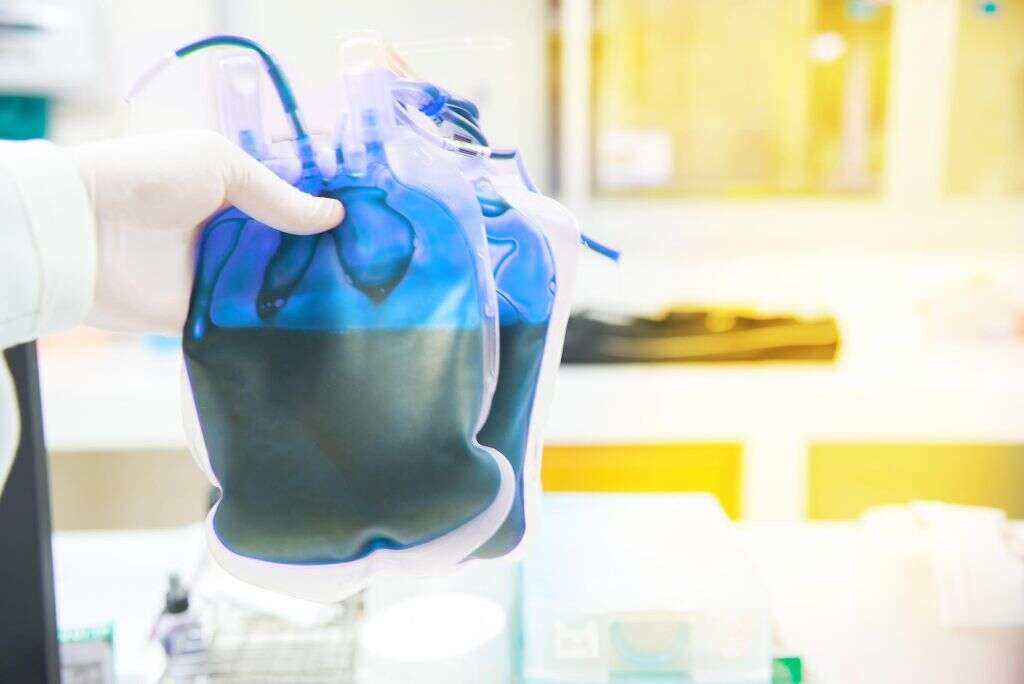What Is Blue Baby Syndrome?
Blue baby syndrome is a name given to a similar set of symptoms that can be caused by two different conditions. In both cases, the most notable sign is a blue tinge to the baby’s skin. This may be diffuse across the surface of the body, or it may be visible only in a few localized areas. If observed, however, the baby should receive immediate medical attention because the blueness of the skin indicates that the baby’s tissues are not receiving enough oxygen.
Blue baby syndrome is fortunately very rare. It can be caused by either a heart defect that is present from birth or an acquired blood disorder. It is crucial to correctly determine the cause of the symptoms so that the required treatment can take place in a timely manner.

1. Causes
When blue baby syndrome occurs, it is usually caused by a congenital heart defect. The most common defect that leads to blue baby syndrome is tetralogy of Fallot. This is a combination of four different defects in the heart occurring simultaneously and affecting the aorta, right ventricle, outflow tract to the lungs, and ventricular septum, which is the structure that separates the two larger chambers of the heart. The effects of these combined abnormalities prevent the heart from pumping blood to the lungs. This cuts off the supply of oxygenated blood to the body’s tissues.
The other cause of blue baby syndrome is a blood disorder called methemoglobinemia. Hemoglobin is the substance in the blood that picks up oxygen and carries it to the other tissues in the body. Methemoglobin is a similar substance that does not bond well with oxygen. A small amount of methemoglobin is present in the body naturally. However, exposure to certain chemicals called nitrites can cause a reaction that converts hemoglobin into methemoglobin. This can result in blue baby syndrome if there is more methemoglobin produced than the body can get rid of on its own. Adults who are genetically predisposed to it may develop methemoglobinemia. However, most patients are babies less than one year old.

2. Symptoms
Regardless of the cause of blue baby syndrome, the most distinctive symptom is the discoloration of the skin, which is called cyanosis. This occurs when the underlying tissues do not receive a good supply of red, oxygenated blood. Sometimes cyanosis is only observable in areas where the skin is very thin. These include the area around the mouth, including the lips, and the tips of the fingers and toes, especially under the fingernails.
Additional symptoms of blue baby syndrome caused by either heart defects or methemoglobinemia include lethargy and difficulty breathing. Feeding issues may lead to an inability to gain weight, and symptoms of diarrhea or vomiting may also be present. A baby with a congenital heart defect may exhibit a rapid heartbeat and a rounded appearance of the tips of the fingers and toes called clubbing. Methemoglobinemia may cause seizures or loss of consciousness.

3. Risk Factors
Heart defects may develop in an unborn baby due to unchangeable factors, such as genetic predisposition, a chronic condition like diabetes, or advanced maternal age (i.e., over 40). Other factors, such as a poor diet or drug use, are within the mother’s ability to control.
The nitrites in the baby’s system that can cause methemoglobinemia are produced in the body from another chemical called nitrates. Nitrates and nitrites are different molecules containing the element nitrogen. Nitrates, which are often found in green vegetables and well water, have three nitrogen atoms, while nitrites only have two. The mature digestive system has natural fail-safes that prevent nitrates from converting to nitrites in dangerous amounts. However, these fail-safes have not yet developed in a baby’s digestive tract. Thus, babies are more vulnerable to methemoglobinemia than adults.

4. Prevalence
It is estimated that 2 million people of all ages in the United States have a congenital heart defect. About 25% of those are critical defects, such as tetralogy of Fallot. An estimated one out of every 3,000 live births involve tetralogy of Fallot.
Methemoglobinemia is an extremely rare condition, so much so that it is difficult to make even an estimate of the numbers of cases. The American Association of Poison Control Centers extrapolated approximately 100 cases per year based on the use of the drug used to treat it. It is very rare in the United States but more common in agrarian countries and rural areas of the U.S. where people drink untreated water from wells.

5. Diagnosis
It is very important for a doctor to discover what is causing a case of blue baby syndrome so that he or she can devise an effective treatment plan. Since congenital heart defects are responsible for most cases, the doctor will probably start by evaluating the heart for any anomalies. This may involve imaging studies such as an echocardiogram, chest X-ray, or cardiac catheterization. Blood tests may be required to check levels of hemoglobin and oxygen, and an electrocardiogram can measure the heart’s electrical activity.
Except for the EKG, the same tests are recommended to evaluate for methemoglobinemia. However, since the blood disorder often results from drinking well water, a doctor may recommend that the tap water be tested to see what the nitrate levels are. An unsafe level of nitrates is over 10 milligrams per liter.

6. Treatment
Most critical congenital heart defects, including tetralogy of Fallot, require surgery to correct. The pulmonary valve that pumps blood to the lungs may need to be enlarged, and a hole in the ventricular septum may need to be closed up so the heart can function the way it is supposed to. Symptoms of blue baby syndrome due to a heart defect should improve following successful heart surgery.
Methemoglobinemia can be treated by injection with a medication called methylene blue. This is a versatile substance also used as a dye or a mild antiseptic. When injected into a patient with methemoglobinemia, the methylene blue works to convert the methemoglobin back into hemoglobin.

7. Variations
The symptoms of blue baby syndrome associated with congenital heart defects vary somewhat from those associated with methemoglobinemia. Though cyanosis is present in both instances, the two conditions can produce a different shade of blue. Methemoglobinemia causes patients to turn a slate-gray color, while oxygen deficiency due to a heart defect produces a shade described as “heliotrope,” named after a purple flower.
When a heart defect is present from birth, cyanosis and other symptoms are often identified shortly thereafter, often within a few hours. By contrast, because methemoglobinemia arises from exposure to substances in the environment, symptoms may not show up for several months after the baby’s birth.

8. Recovery
Recovery from pediatric heart surgery takes about one to two months. During this time, it is important for parents to support both the baby’s head and buttocks when lifting him or her up and not allowing the baby to cry for too long. The baby will need routine care and check-ups from a cardiologist for the rest of his or her life.
Babies with methemoglobinemia who receive methylene blue recover shortly after the medication is administered. However, further exposure to nitrates can cause the condition to come back. If this occurs, the baby will need additional injections of methylene blue to counteract the symptoms.

9. Prognosis
Left untreated, blue baby syndrome can eventually prove fatal regardless of the cause. Chronic oxygen deprivation can cause brain damage that can lead to developmental delays. When tetralogy of Fallot goes untreated, the patient is unlikely to live past the age of 1.
Surgery to correct a congenital heart defect has a better chance of succeeding the earlier that the condition is diagnosed. Therefore, it is important to watch for symptoms within the first few hours after birth. Children who receive methylene blue for methemoglobinemia and avoid further nitrate exposure typically have no further health complications from the condition and go on to lead normal, healthy lives.

10. Prevention
Parents can decrease the chances of their child developing blue baby syndrome by taking steps to prevent the underlying conditions that cause it. Women who are pregnant should avoid smoking and exposure to second-hand smoke and abstain from alcohol and illicit drugs. Prescription and over-the-counter medications should only be taken with a doctor’s supervision. Expectant mothers should also eat a healthy diet and keep diabetes under control, if applicable. Bear in mind, however, that some heart defects are caused by factors beyond the parents’ control, and it is not always possible to prevent them.
Bottle-feeding a baby with formula mixed with well water can expose the infant to high levels of nitrates. This is especially true in rural areas where the water may be contaminated by run-off from farms. Breastfeeding the baby for at least six months avoids exposing the baby to high nitrate levels and offers other health benefits as well. Once the baby becomes old enough to eat solid foods, parents should be careful about feeding him or her foods that are high in nitrates. These include otherwise healthy foods like beets, broccoli, carrots, and spinach.












